Book now available at Amazon worldwide!

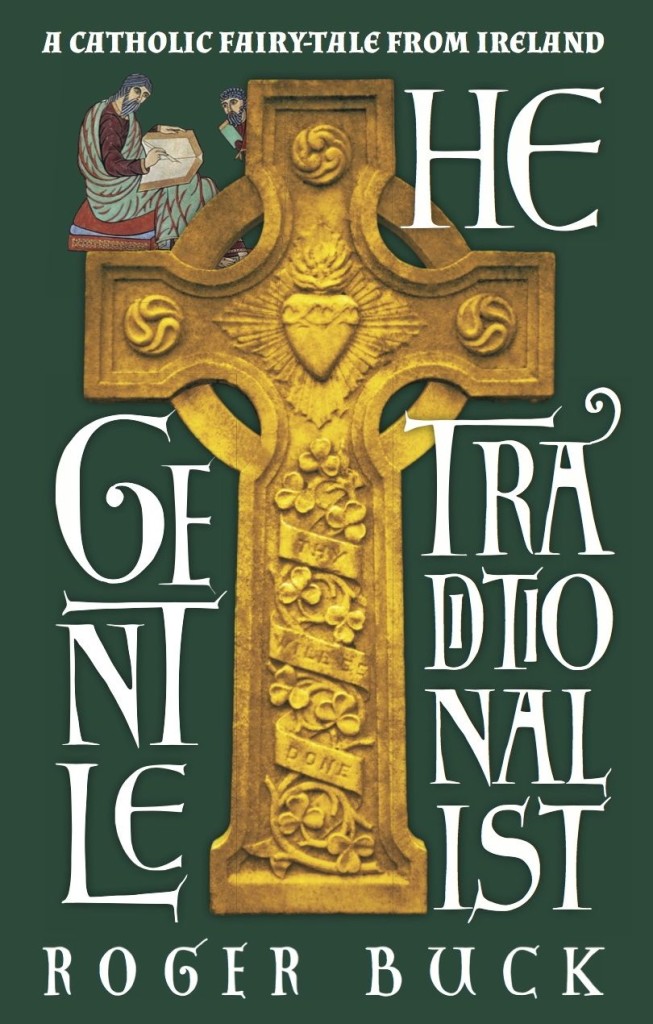
Some Opening Thoughts
Today, we present the first chapter of my new book The Gentle Traditionalist.
Now, in one sense, my book is a novel. (Even if, strangely enough, it’s hardly a novel at all. I’ll try to explain that contradiction shortly). Anyway, you can get some idea from the book’s description on the back cover:
Geoffrey has a problem. All his life he’s lived according to “sensible” sceptical, secular values. Then, his true love left him for a New Age community in Scotland. But it gets worse: now she wants to be a traditional Catholic nun! Geoffrey is bewildered, angry, lost. Until, one Valentine’s Day in Ireland, he meets a mysterious guide–the Gentle Traditionalist. Together they commence a most unusual dialogue of ideas concerning:
* The Heart of the Gospel
* The Real Nature of the Church: A Supernatural Mystery
* The Crisis in Catholicism today: the Loss of Tradition
* The New Age Movement
* Catholic Ireland
* Why Secularism gets away with murderBoth whimsical and serious, the dialogue in this book offers a probing exploration of the Catholic Mystery, Christendom, and the crisis of the West today. Join us for a very special Valentine’s Day when Geoffrey’s barren, rational world gets turned upside down…
All this then indicates why the book is a short, easy-to-read novel – a story with a beginning, a middle and a (surprise) ending.
But as I say, it is hardly a novel at all—largely because there’s hardly much plot or action.
Rather, the book mainly features dialogues about Catholic tradition. Now, I risk blowing my own horn way too much here, but I think one reviewer captures this dialogue aspect of the book particularly well. (Even if he is far too generous to me!)
The Socratic Dialogue is a literary form quite literally as old as Western Civilisation. Boethius, Joseph de Maistre and Vladimir Solovyov—among countless others—made use of it to critique the societies and world-views under which they lived.
Now Roger Buck in The Gentle Traditionalist employs this age-old genre to examine that which would prefer not to be examined —the Western secular ‘religion’ that has come to define the society under which we in the so- called ‘developed’ world all live.
Keen, sarcastic, and for all that warm-hearted, Buck’s teaching figure is understanding and genial—even while refusing to pardon the unpardonable. His protagonist is as wooly-headed as most of us, but withal wanting to know the truth—especially if it allows him to understand the woman he loves.
As brilliant a guide for the perplexed as this age is capable of producing.”—CHARLES COULOMBE, author of Puritan’s Empire and Everyman Today Call Rome.
Somehow I wanted to invoke Coulombe at this point, so as not to mislead anyone. Because what you are about to read, dear Reader, very much represents the novel aspect of the book. Thus, you could take away a one-sided impression.
For although I hope I’ve written a little tale of romance, set on Valentine’s day, truly the most important thing I’m trying to do is write about IDEAS.
As another reviewer writes:
The Gentle Traditionalist is a tremendous book: moving and humourous, opening up the most profound issues, engaging the most strident of polemics with the lightest touch. Ireland’s place in the English-speaking world, the revolutions and counter-revolutions of the Enlightenment and the modern era, and the human weakness and divine resilience of the Catholic Church, are the book’s themes. But it remains for all that an easy read, above all a gentle appeal to those outside the Church to reconsider the hostility which, for so many, is now an unthinking, bred-in-the-bone prejudice.
Today it is hard to know what to say to the sincere enquirer, when the Church appears to send out such mixed signals and internal disputes are take up so much of her time and energy. Roger Buck is to be congratulated for making the case for the Church at this moment of confusion. For Christ has not ceased to be our one hope, the Spes Unica; and the Church is today, more than ever, the only path back from the barbarism that seems to be engulfing the West.”— JOSEPH SHAW, President of the Latin Mass Society of England and Wales.
Yes, the book is very much to do with tackling that ‘unthinking, bred-in-the-bone prejudice’ which tragically blinds so many, many people today.
I speak from experience: I was blinded by Secularism and the New Age Movement for the first thirty-four years of my life.
Here in this book—part novel, part dialogue—I make my own humble endeavour to take the blinkers off—in the prayer that some people may be led like I was led, to the liberating wonder and beauty of the Catholic Mystery.
And now the first chapter follows below. Alternatively, you can hear me read the first chapter in this video here:
The Gentle Traditionalist – Chapter One
GPL. Those are my initials. You’ll hear my full name later. But let’s start with those. GT—the Gentle Traditionalist—would like it that way, I think. You’ll hear his real name soon too. This book isn’t mine, you see. It’s GT’s. Without him—and what he did for me—I could never have written it.
I call it a book. But, really, I’m not sure it is a book. Not in the ordinary sense, anyway. I’ll be frank with you: I’m not much of a writer. These are just some notes. Hopefully, they give you the minimum you need to make sense of my story.
That story starts in Ireland, Monaghan in the north to be precise—although I come from Winchester in England, went to Cambridge University, and work in London. I’m twenty-nine years old and I’d never been to Ireland before.
Now, it wasn’t that I was especially interested in Ireland. It was SHE. She loved Ireland. And I couldn’t help myself. I loved her. I always loved her. I know it sounds corny—but honestly, I think I loved her from the moment we met. It will sound even more corny when I tell you we met on Valentine’s Day. I met my true love on Valentine’s Day. And, later, I lost her on Valentine’s Day. Cue the sad sound of violins. But I can’t help it. Corny or not, it’s true. And, as you’ll see, it’s important to my story.
Anna O’Neill is her name. With a name like that, you might think Anna was Irish. But she was English—only her father came from Ireland. She’d grown up in Liverpool, but was working as a stenographer in Cambridge when I met her. Later, we lived together in London. She always drove me crazy. In more ways than one.
Our relationship finished when Anna said she needed a year to “find herself.” She’d had an inheritance which allowed her to quit the stenography. She then took off for some New Age community in Scotland where they talk to giant cabbages or something.

But she didn’t come back, as she’d promised. She went to Auroville in India, then Ojai and Esalen in California. It went on: two years, then three, four, five. She was having adventures all over the world. Or misadventures. She wrote me emails about burning her feet on hot coals while fire-walking in Hawaii. And she got hypothermia with Yogi Star Bear—a Native American shaman—during a “Vision-quest” in Yellowstone National Park.
I also found some time to travel. I went to Africa. What I saw appalled me. It literally gave me nightmares. Maybe I should tell you upfront: I’m pretty left-wing. To me, it’s transparently obvious global capitalism has a great deal to answer for. And, after Africa, I meant to do something practical about it. By contrast, I couldn’t help but judge Anna as completely impractical, frivolous even.
Neither of us started any new relationships in this time. I trust Anna implicitly in that. In her emails, she always said she still loved me, but that I shouldn’t wait for her. We were just too incompatible. Our Mercuries were inconjunct. And mine was retrograde at birth. We were soul-mates, she said, but doomed by the stars.
One thing was certain: I never knew how to handle this New Age side to Anna. I always hoped she’d get over it. How could she believe all this stuff about star signs and cabbages? Not to mention karma, angels, and holistic frog-licking. Okay—I lied about the last. Still, it tells you something about my sheer frustration with this nutty side of her.
She even changed her name to Lotus Flower for a few years. But finally, she returned to stay with a friend in London for a whole summer.
She was different. She seemed less crazy, more ordinary, somehow. And her name was back to Anna again. I felt relieved. Maybe all the New Age nonsense was over now.
But then she dropped the bombshell.

We could never be together, she told me. She had decided to take a vow of celibacy—be a nun. My jaw fell open. “A Buddhist nun?” I asked.
No, she said, Catholic—as in Roman Catholic. I couldn’t believe my ears. Never in a billion years could I imagine Anna being Roman Catholic, let alone a Catholic nun!

Moreover, she wouldn’t be like one of these modern nuns who wear ordinary clothes. She was going full-blast traditional. She’d found this convent of nuns in France called Les Religieuses Victimes du Sacré Coeur—the Religious Victims of the Sacred Heart. What a name! They were into the Mass in Latin and they were strict.
She would wear a habit, a veil, the whole bit. Anna was stunning—talk about a waste. But it was more than that, of course. I was gutted—beyond gutted. Gutted squared. Up to now, I really thought Anna and I would make it someday.
Now, she seemed further away than ever. Even if she weren’t becoming a nun, much more separated us than when she was simply a New Ager. Before, we were both left-wing and we shared the same basic liberal convictions. When Anna was a New Ager, at least, she didn’t think masturbation was a sin or that some people went to Hell. We both supported abortion, gay issues—stuff like that.
We were socially inclusive—and if one thing united my own secular perspectives with her New Ageism, we both agreed organised religion was pretty old-fashioned, even stupid and bigoted.
Now, Anna had suddenly developed this rigid intolerance. I really could not understand it. Yet I loved her and somehow she looked more beautiful than ever. She had this new poise and developed this enigmatic smile. It was like the Mona Lisa, I thought. But Anna was far more beautiful than the Mona Lisa! And despite her newfound rigidity, Anna actually seemed less angry than in the past. Back then, she had quite a temper. She didn’t suffer fools gladly and could explode at the drop of a hat.
It was weird: Now she was gentler, softer—more tolerant and intolerant at one and the same time. We still had fights, though. But Anna always apologised first—even when it was clearly my fault. Later, she went to confess it to her priest.
Finally, at the end of that summer, she left for Marseilles in France. I went to the airport with her. It was the worst day of my life. I thought she was gone forever. I didn’t hear much from her after that. She was a novice—a trial nun before making vows. Still, I guess she meant to break all her worldly ties.
Then, one day at the start of February, everything changed again. I heard she wasn’t in France, but staying in a big, old farm-house outside Monaghan in Ireland. I was elated! Had she dropped the Catholic thing now, just like the New Age stuff?

No, she told me on the phone. She was still Catholic. But she wasn’t sure God was calling her to be a nun. She told me the farmhouse was big and cold and empty apart from her. I told her I had two weeks’ leave coming. Next day, I caught a plane to Dublin and drove up to Monaghan.
It was like old times, living under the same roof again. Except, of course, it was purely platonic. This gorgeous woman I loved. So near and yet so far. Unbearably frustrating. Still, we talked. We talked like never before.
Of course, we talked about her Catholicism. I tried to understand all her rigid rules. Or maybe I didn’t try hard enough. Maybe I was too upset, I just wanted to protest. In any event, Anna would clam up, rather than give me rational explanations why she believed the crazy things she did. It was always “the Church teaches this.” Or “the Church declared that”— back in the year 381 or something. It made me mad. How relevant was that today? And couldn’t she think for herself?
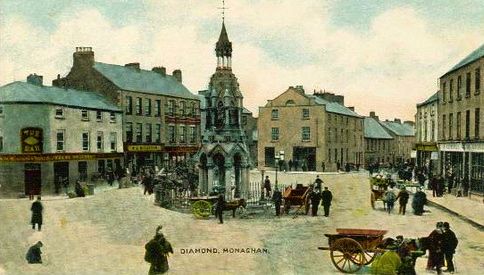
Occasionally, though, she did give reasons I could understand. We were talking about Church teaching on Hell. I said it sounded pretty dour, dire, awful. She said people were already in Hell everywhere in this world, drug pushers, killers, war-mon- gerers—why should Hell stop when you kicked the bucket?
“Take Hitler,” she said. “If you were responsible for killing six million Jews, five million Poles and millions more soldiers and civilians, would you expect eternal happiness, after you died?”
“No, but Christianity also talks about Hell being eternal,” I objected. “A million times a million years is only the first nano- second of your infinite torment. I wouldn’t wish that on anybody —not even Hitler. I can’t believe in a God who is less merciful than I am.”
“Hell is a mystery, a terrible mystery,” she replied. “Apparently, St. John Paul II once said we cannot know for certain who will be in Hell at the end of time or indeed whether anyone will be in Hell. On the other hand: ‘better to reign in Hell than serve in Heaven.’”
“What’s that supposed to mean?”
“It’s Milton. Satan in Paradise Lost. Perhaps a soul like Hitler’s prefers eternal Hell to Heaven. Like I said, Hell is a mystery, unfathomable, terrible…” Her voice trailed off. Then she added, “We can’t know what Heaven or Hell are really like. Not in this life. But, if you believe in an afterlife, it doesn’t make sense to just suppose everyone will automatically be happy, when most people in this world are not happy.”
Somehow, I could buy this. This was why Catholics talked about Purgatory and Hell. Obviously, we live on a planet of incredible suffering everywhere. Why should the next world—if there was a next world—be automatically different? At any rate, I was never against the idea of an afterlife. Indeed, I believed there must be something afterwards. Life couldn’t be that pointless. I just couldn’t see strumming a harp for eternity. Or being slowly roasted over a spit by the devil either. But if Hitler’s soul was still around somewhere, I couldn’t imagine he’d found eternal bliss.
No—as GT was to show me—Anna and I did share some basic beliefs. But I hardly realised this at the time. Still, I should be clear about this: I wasn’t an atheist or even an agnostic. I knew there had to be something out there. It just didn’t look like a bearded, old man in the clouds who turned himself into a baby to save me.
I also didn’t think the Catholic Church had some sort of monopoly on the truth. And I found Anna’s attitudes towards the Church completely contradictory. For one thing, she’d gone all the way to a Latin Mass convent in Marseilles, because she couldn’t bear the new liturgy. But now in Monaghan she went to an English Mass—every single day.
“There’s no Latin Mass for miles around,” she “explained.”
“Then why go to an English Mass, if you don’t like it?”
“The Mass is the Mass is the Mass,” she said, “but you won’t understand that, unless you know what the Mass is. Christ is still present there—whether you like the liturgy or not.”
“You mean as something to eat?” I scoffed.

“I told you, you wouldn’t understand.”
I didn’t. Nor could I understand why she wanted to go to a Mass in a dead language. From what I understood, the Catholic Church had changed the Mass when it liberalised itself in the 1960s. This liberalisation looked like a good thing to me. But Anna thought the changes in the Church were slowly killing it.
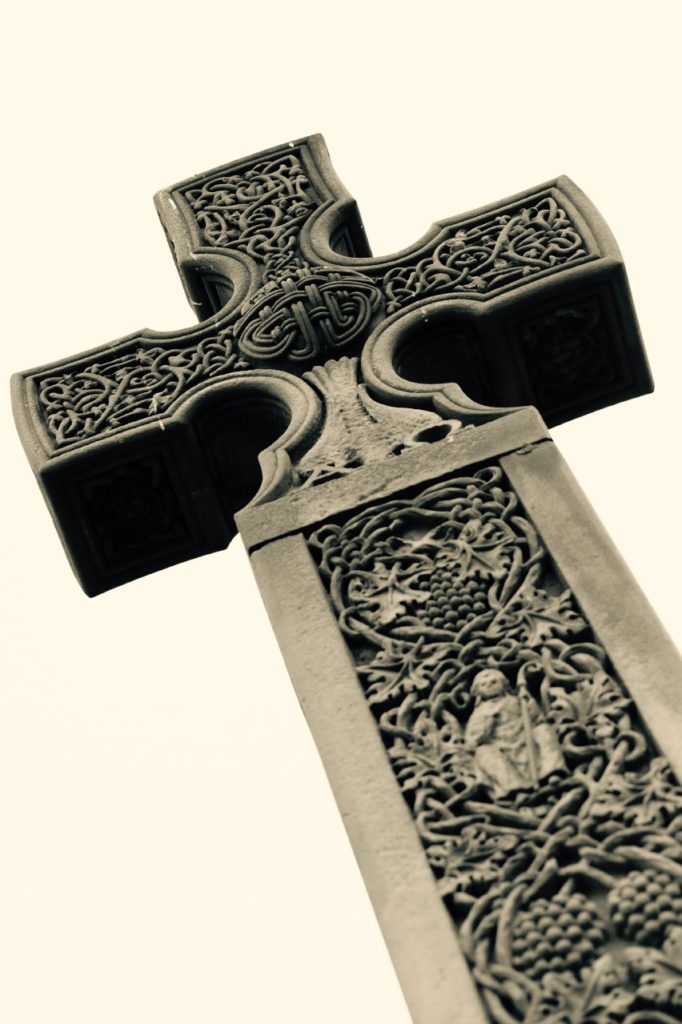
Since the ’60s, she told me, there’d been massive declines in vocations—as well as Catholic baptisms, marriages, etc. People were abandoning the Church in droves. She was particularly worried that very few people bothered with Confession anymore.
The new liturgy, according to her, was a major part of the problem. Apparently, a “mystic life-force” was being drained from the Church. Anna might be a Catholic now, but she still sounded like a nutty New Ager to me.
Another point of tension between us was Ireland. She was thinking of settling down in Ireland—even though the country had little in the way of the Latin Mass. Actually, Anna always had this thing about Ireland. So this wasn’t entirely new.
Like I said, her father was Irish; he came from County Cork. And, as a kid, Anna went on holiday to her old grandmother in Cork. That grandmother had been very special to her and her times in Cork were magical—a respite from an unhappy childhood in Liverpool.
But now her old love of Ireland was mixed-up with her Catholicism—and a newfound Irish nationalism that, frankly, troubled me. She reeled out this version of history whereby Catholic Ireland had long been oppressed by Protestant England. It was hard for me to take. Even if the British had been terrible at times, what was the point in stirring up these ancient hatreds? Staying near Monaghan, we were only a few miles from the border with Northern Ireland.
Whilst Anna deplored the terror inflicted by the Provisional IRA, she considered that border a tragic thing—a horrendous gash across the country. Both North and South desperately needed the other, she said. Cut off from each other, Ireland, according to her, could not fulfil her “spiritual calling.” Whatever that meant. I just didn’t get it.
At any rate, Anna might be half-Irish on her father’s side, but, basically, she was English. She’d grown up there, like I did. Indeed, she’d always loved England. As did I. Her newfound criticisms of England grated on my nerves.
Annoyingly, she also put down modern Ireland. Ireland, Anna said, had become too much like secular England or America. As recently as 1970, she told me, ninety per cent of the people still went to Mass every Sunday. It had dropped to something like a quarter in less than fifty years.
For Anna, this was a tragedy. Also, since 1970, murder in Ireland had increased sixfold and suicide had grown by four times*. Obviously, Anna linked the loss of faith to social unrest, even murder, in modern Ireland.
The nation had lost what made it special, she claimed—the Catholic Church. Apparently, it was all some Anglo-American plot to turn the country into part of the capitalist West.
Weirdly, it was just the same with her old New Age stuff. Now, she really objected to holistic spirituality, calling it “pagan.” It wasn’t really holistic, she said. It wasn’t inclusive, but exclusive. Subtly, it worked to eliminate Christ and the Cross from Western Civilisation. Much of it, she said, came from the East. But it was popularised by Anglo-American gimmicks. And now Ireland was falling for those same gimmicks.
Listening to her, it all seemed like one gigantic conspiracy against the Catholic Church in Ireland. England. America. Freemasons. President Obama. Margaret Sanger. Gloria Steinem. Hollywood. The Rolling Stones. The CIA. Helena Blavatsky. The Dalai Lama. Yogi Bear. God knows what else—maybe the Loch Ness monster, for all I knew. They were all in it together to subvert Christ’s Church on earth. Arrgh. How could she take this crazy, paranoid stuff seriously?
Still, Ireland was starting to get to me, too. In a good way. The Monaghan people were friendly—sometimes astonishingly so. We broke down in Anna’s old car one day. It was pouring with rain.
I couldn’t believe how many people stopped and helped us out. We got drenched and while one old man worked on the engine, another couple invited us back to their home to dry ourselves off and have tea. The Irish people were like that, Anna said. Ireland possessed a strange magic, I had to admit.

And maybe that Irish magic was now working on us. Because, although we fought, we also laughed a lot. In fact, I’ve told you the worst stuff. Because, you’ll see, it’s necessary to this story. But, honestly, for the most part, we were actually having a really good time during those two weeks.
So good, in fact, I started to think crazy things.
Or maybe they weren’t so crazy. I could see Anna still loved me. God knew—if there was a God—I still loved her. Clearly, she was giving up the convent idea, if she wanted to live in Ireland. There was no Latin Mass convent in Ireland and no way would Anna join a modern convent.
What if I were willing to find a job in Ireland? Would Anna marry me? She could have her Catholic life here. I could have my secular life, now that Ireland wasn’t so Catholic anymore. Heck, I’d even marry her in the Church, if that’s what she wanted.
I see now I was deluding myself. But “love is blind,” as the old cliché goes. The two weeks were nearly up. Tomorrow would be our “anniversary”: Valentine’s Day. I decided to go for broke: propose to Anna. The night before was actually very special. We were completely connected, just like in the old days. Anna even held my hand while we sat before a big, log fire in the farmhouse. She still loved me, I knew it. How could she say no?
Global Amazon link to buy The Gentle Traditionalist:

Footnote:
* This figure will likely strike many as extraordinary. It did to me! What helps to ‘explain it’ is the extraordinarily low level of violent crime and suicide in Catholic Ireland before 1970. See Desmond Fennell ‘Why the Steep Rise in Suicides’ Third Stroke Did It, pg 141-145.

Foreword for Monarchy by Roger Buck
Buying Books at Amazon Through These Links Gives Us a Commission. This Supports Our Apostolate. Thank You if You Can Help Us Like This!
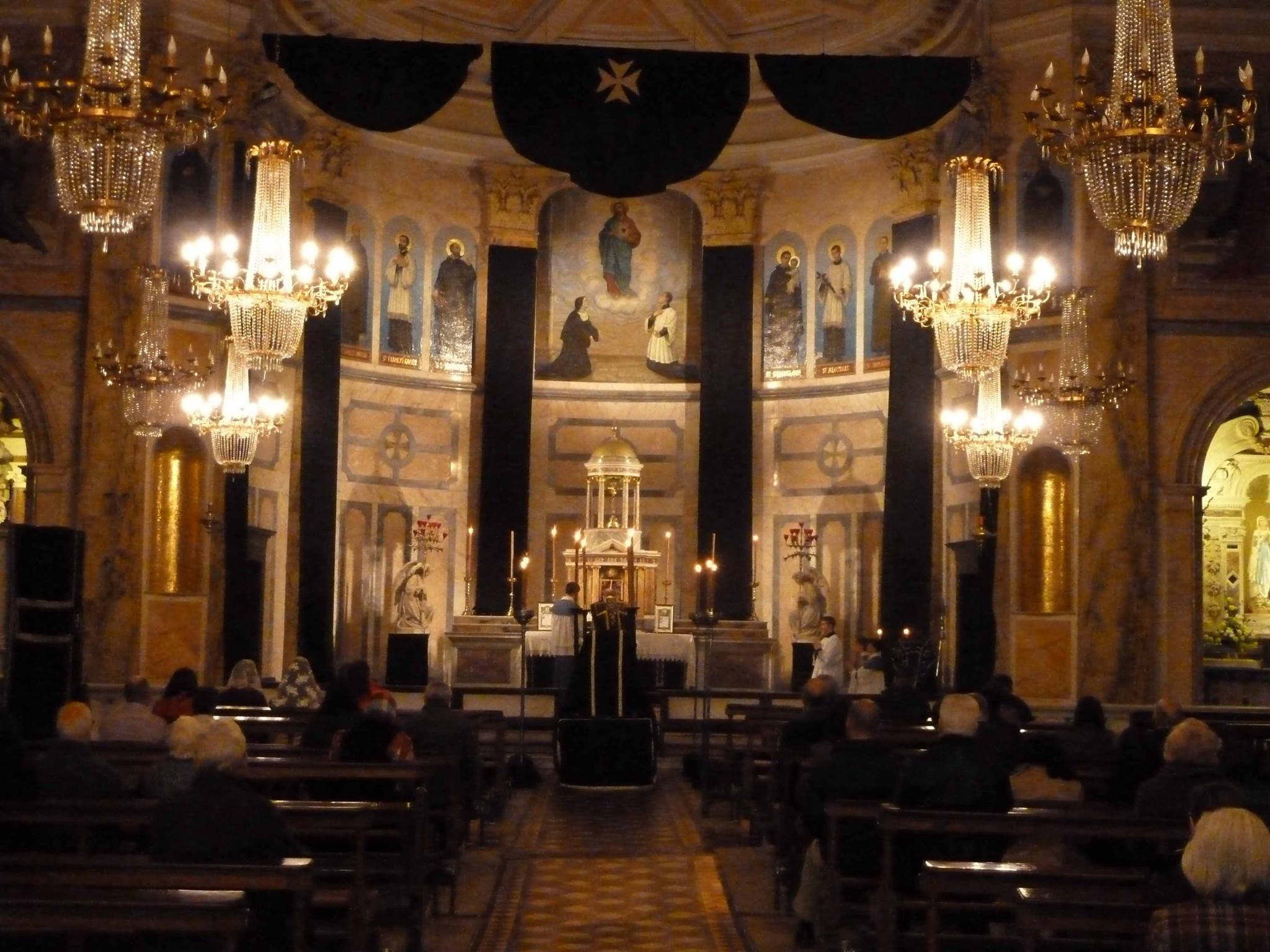
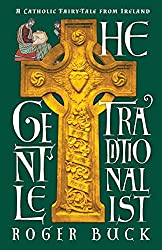
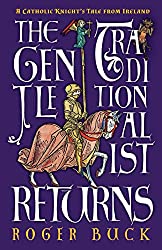
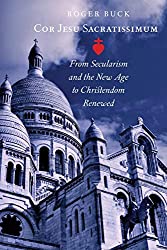
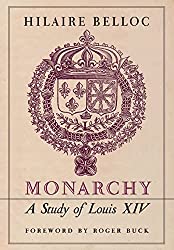
Comments
comments are currently closed
23 responses to “The Gentle Traditionalist – Chapter One”
[…] « The Gentle Traditionalist – Chapter One […]
[…] we published a long extract from my new book – the entire first chapter in […]
[…] Gentle Traditionalist, Roger’s first book (first chapter online here) is utterly BRILLIANT. It is a […]
[…] Today we have another extract from The Gentle Traditionalist – my new book of dialogues of apologetics. […]
[…] I imagine this will be the last post from me before Christmas – although I believe my husband Roger will be saying more regarding his new book The Gentle Traditionalist. […]
[…] Entire first chapter online here with more about the book. Link: corjesusacratissimum.org/2015/11/the-gentle-traditionalist-chapter-one/ […]
[…] as I mentioned before, my book The Gentle Traditionalist recently Number One Best Seller at Amazon UK in Catholic books. It’s now been knocked down to […]
how can you be a leftist AND Traditional—the two are like water and oil…no mix? Just sayin’
Thank you, Susy. I am sorry if you received the impression from my first chapter that the Gentle Traditionalist is on the left! For I certainly agree with you: oil and water.
To be clear: the Gentle Traditionalist is no more on the left than Benedict XVI, Hilaire Belloc or GK Chesterton – all of whom inspired my thinking in this book.
Indeed, a major theme of the book is how left wing revolutions starting with France in 1789 – and continuing with today’s secular-liberal revolutions – have destroyed tradition and robbed people of Jesus Christ.
Good morning, what I meant was, you yourself say you are very left..that was my question, how can one be a liberal and yet adhere to Traditional teachings …pro-life, hetero marriage, the things we Traditional Catholics are strong about, I don’t understand how Pelosi and Kerry can call themselves Catholic and yet agree with abortion, gay marriage…you get my drift. just sayin’
Dear Susy – thank you! Now I understand the confusion!
That is a fictional character – Geoffrey – speaking. I am not Geoffrey!
Quickest, easiest way to explain is to paste in back cover description of my book:
Just quickly to add my own views have nothing to do with the hypocrisy of these American politicians. But my book is inspired by those I mentioned, Benedict XVI, Belloc and Chesterton (each of whom is quoted) …
God bless you, Susy.
OHHHHHHHHHHHHHHHHHHH OK, now I get it-I certainly did get confused…thanks for clearing the fog.
[…] Why do I find it so embarrassing to gush in public? I cannot say, but having poured out my enthusiasm for Peter Kwasniewski’s Resurgent in the Midst of Crisis last time, I feel reticent to repeat the act with Thomas Storck’s From Christendom to Americanism and Beyond: The Long Jagged Trail to a Postmodern Void. (Both books are also from Angelico Press who recently published my own book.) […]
[…] Today, we feature another extract from The Gentle Traditionalist – my new book of apologetics in the form of fictional dialogues abou… […]
Roger,
I just want to make one comment. The mess did not begin with the French Revolution. For many years, even while still not ready to enter the Catholic Church, I said that the Puritan Revolution was the necessary Calvinist precursor to the French Revolution. Obviously, if you accept that assertion, then you must accept that the Tudor waves of anti-Catholic revolution were also necessary to the French Revolution. And if you accept that, you also must accept that the entire sola fide revolution was a necessary precursor to the French Revolution. And if you accept that assertion, then perhaps you will agree that Richard Weaver’s conclusion that Nominalism was the great source of Modernism’s many tentacles. And if that makes sense to you, you might stumble into giving credence to the Southern Agrarians for their traditional based critiques of all that is wrong, especially spiritually and culturally, with the Modern world. And that will lead you the British Catholic Back to the Land movement and Distributism.
And you can bet your last penny that those in thrall to Modernism is any form will hate that with all their fury.
Jimmy, thank you for this. No arguments here. The French Revoluton is a very seminal point, but hardly without its own roots in the past.
I think if you were to read the whole book, you would see my affinity with what you you rightly say.(It’s always a bit tricky taking an extract out of context or a greater whole, things can easily get lost/misunderstood.)
Also, I am indeed interested in the Southern Agrarians, though I know little of them. With the Chesterbelloc and Distributism, however, it is different – my whole thinking turns around that and my book owes a tremendous debt to Belloc in particular.
I’ll get the book eventually. I probably need to do so for St. Patrick’s Day. Some years ago, I came to the conclusion that those in the New Age Movement who had strong Celtic emphasis could be brought around much easier than those New Agers who were pure Eastern in emphasis. That is one of the many things I’ve asserted that guaranteed people would see me as a kook. And now you’ve done gone and proven it for me.
I suggest you read Richard Weaver’s Ideas Have Consequences. It is the best short book I’ve read digging at what is wrong philosophically with Modern man. Allen Tate’s Essays of Four Decades (with an Intro by Louise Cowan) is also a must. Tate’s essay in I’ll Take My Stand, ‘Remarks on the Southern Religion,’ is the best in that volume and necessary to understanding his later conversion to Catholicism.
Have you ever read Irish-born Brian Moore’s Irish-set novella Catholics? The first thing I wrote after attending my first TLM is an article on that fiction. It appeared in The Angelus. If you are interested in it, email me your address, and I’ll send a copy.
You are hardly a kook, Jimmy Cantrell! And if you had anything further written on that very interesting theme (Celtic vs Eastern inspiration in terms of reaching the New Age) I would be very interested to read it. Likewise, I am interested in your thoughts on Moore’s novella. So I will email you – or if you should see this before I manage to, please send it to rogerATcorjesusacratissimum.org.
I will look out for Weaver and Tate as well. Thank you for all this.
Wishing you a blessed St. Patrick’s day!
Roger, you got me! At least by the hook. If your first chapter is any indication of the rest of the book, I really want to find out what happens, though I “kinda” know already. Nonetheless, it’s the journey between the beginning and the end that I am looking forward to. Ah, but then again, you might just surprise me in the end 🙂 You’re writing is much better than you elude. I admire your humility though. As a cradle Catholic, who has come from more than 4 decades of knowing nothing other than the catechism, traditions, and liturgy of the Novus Ordo, but have come to embrace the usus antiquiors of our Catholic Faith (especially the TLM); I find myself constantly seeing the ugliness of my last forty plus years of Catholicism. I often find myself very negative and fault-finding towards the Novus Ordo world. I don’t want to be that way, but sometimes I can’t help it. From what I read so far in this sample chapter of yours, Anna resonates in that she claims the Mass is the Mass is the Mass. This reminds me to stay appreciative for the Novus Ordo because without it, I could have easily turned into GPL as he is in this chapter. I just purchased the hardcover, and I look forward to reading the rest. God Bless you and your writing vocation!
Warm thanks for your vote of confidence in my book, Rexcrisanto!
Yes, it is very hard for the sensitive soul, like my Anna character and like yourself, I believe, not to feel this “ugliness”. And to suffer …
However, it is not that Christ is absent from our Mass – it is that He has been veiled in banks of fog – banality, confusion and worse that we will not mention now. We must persevere in this trial to see through the fog and do what we can to disperse it.
Thank you, too, for all your words about my writing. I very much hope you enjoy reading your hardcover copy : – )
http://www.traditionalcatholicsermons.org http://www.novusordowatch.org thanks Roger keep the Faith!
[…] Now, we recently we have presented numerous fictional extracts from The Gentle Traditionalist– including the first chapter here. […]
[…] In case you want to do the latter, probably the most important extract is the first chapter here … […]